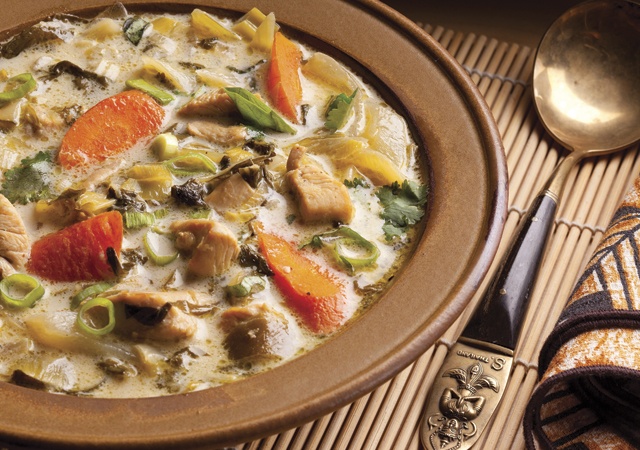When I was younger, the words Asian cuisine would bring to mind familiar dishes like sweet and sour shrimp or moo goo gai pan, but not much else. The local Chinese restaurant was my only exposure to the food of an entire continent.
But as a grownup, my horizons have been expanded. In large part, it’s because I moved to a larger city with more variety in restaurant choices—thus I became exposed to more previously unfamiliar fare.
I remember my first visit to an Indian restaurant, when I was a college student. I was so baffled by the unfamiliar menu that I left without ordering. That was a shame, because it was many years before I tried Indian food again, and now it’s one of my absolute favorite cuisines. I think about the years I missed out on such delights as chicken tikka masala, lamb vindaloo and shrimp coconut curry with some regret.
Now, my palate is definitely attuned to pan-Asian cuisine. Japanese (and not just sushi), Vietnamese and Thai foods are part of my regular dining experiences. And I can thank my wife, Lisa, for my exposure to many of these cuisines. She has been my guide into a larger and tastier world.
A couple of years ago, she had a soup at a Thai restaurant that she liked so much, she came home and, with some trial and error, figured out how to make it herself. This spicy-sweet-tangy broth with the rich flavor of coconut milk is a satisfying meal by itself or can be the starter for a larger dinner.
Lisa is an “eyeball” cook, tossing ingredients together more by look and feel than by measurement. But to share her recipe, she took the time to figure out the basic amounts of ingredients she uses. And because some of the ingredients may not be available in smaller grocery stores (you can find everything but lemongrass online), I have included some possible substitutions.
Sample the soup as you cook, especially if you use substitutes. The amounts of just about any of its components can be adjusted to fit your particular tastes.
Thai Chicken Coconut Soup
1 medium onion, diced
6 tablespoons plus 1 teaspoon oil
6 green onions or shallots, sliced
4 large cloves garlic, minced
2 stalks lemongrass (or substitute 1 teaspoon lemon zest and a teaspoon or so of minced fresh ginger)
1 quart chicken broth
1 tablespoon fresh grated ginger
3 medium carrots, peeled and sliced
2 pounds chicken thighs or breasts
3 tablespoons miso paste*
1/2 cup fresh basil (or Thai basil)
Juice of 1 1/2 limes, or to taste
8 baby bok choy (Chinese cabbage)
8 to 10 mint leaves, torn into small pieces
1 bunch cilantro, leaves only
1 can (13.5 ounces) coconut milk
1/4 cup fish sauce,** or to taste
1/4 teaspoon cayenne pepper, or to taste
1/8 cup rice wine vinegar, or to taste
Sauté onion in 6 tablespoons oil in large stock pot until translucent. Add green onions (or shallots) and garlic. Discard tough, brown stalk from lemongrass and chop tender green portion. Add to sauté along with chicken broth, grated ginger, carrots and 1 quart water. Meanwhile, debone chicken, cut into bite-sized pieces and sauté in frying pan with teaspoon oil until browned. As chicken is cooking, remove about 1/2 cup hot broth from stock pot and mix with miso until smooth. Return to pot along with basil and lime juice. Trim and discard ends from bok choy and add to soup along with mint leaves, cilantro leaves, coconut milk, fish sauce, pepper and vinegar. Taste and adjust amounts of lime juice, fish sauce and vinegar. Add browned chicken and juices from skillet to soup. Simmer an additional 10 minutes, or until carrots are tender. Serve by itself or over noodles.
Servings: 12. Serving size: 2 cups. Per serving: 289 calories, 27.1 g protein, 12.7 g fat, 18.6 g carbohydrates, 6.6 g dietary fiber, 827 mg sodium, 8.3 g sugars, 48 mg cholesterol
* Miso is a fermented soybean and/or rice product often used to make soups or sauces in Japanese cuisine. If it’s not available, try substituting soy sauce at a rate of a teaspoon of soy sauce per tablespoon of miso, or an equivalent amount of tahini (sesame paste).
** If you must substitute for the fish sauce, which is a condiment popular in Thai and Vietnamese cooking, try a combination of soy sauce and a squeeze of lime juice to equal the amount of fish sauce.


